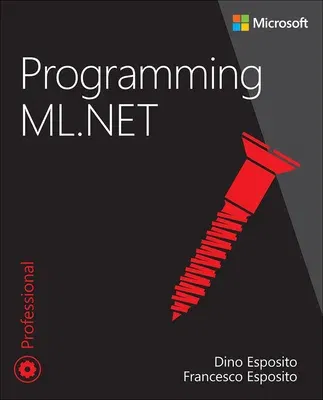The expert guide to creating production machine learning solutions
with ML.NET!
ML.NET brings the power of machine learning to all .NET developers-- and
Programming ML.NET helps you apply it in real production solutions.
Modeled on Dino Esposito's best-selling Programming ASP.NET, this book
takes the same scenario-based approach Microsoft's team used to build
ML.NET itself. After a foundational overview of ML.NET's libraries, the
authors illuminate mini-frameworks ("ML Tasks") for regression,
classification, ranking, anomaly detection, and more. For each ML Task,
they offer insights for overcoming common real-world challenges.
Finally, going far beyond shallow learning, the authors thoroughly
introduce ML.NET neural networking. They present a complete example
application demonstrating advanced Microsoft Azure cognitive services
and a handmade custom Keras network-- showing how to leverage popular
Python tools within .NET.
14-time Microsoft MVP Dino Esposito and son Francesco Esposito show how
to:
- Build smarter machine learning solutions that are closer to your
user's needs
- See how ML.NET instantiates the classic ML pipeline, and simplifies
common scenarios such as sentiment analysis, fraud detection, and
price prediction
- Implement data processing and training, and "productionize" machine
learning-based software solutions
- Move from basic prediction to more complex tasks, including
categorization, anomaly detection, recommendations, and image
classification
- Perform both binary and multiclass classification
- Use clustering and unsupervised learning to organize data into
homogeneous groups
- Spot outliers to detect suspicious behavior, fraud, failing equipment,
or other issues
- Make the most of ML.NET's powerful, flexible forecasting capabilities
- Implement the related functions of ranking, recommendation, and
collaborative filtering
- Quickly build image classification solutions with ML.NET transfer
learning
- Move to deep learning when standard algorithms and shallow learning
aren't enough
- "Buy" neural networking via the Azure Cognitive Services API, or
explore building your own with Keras and TensorFlow

